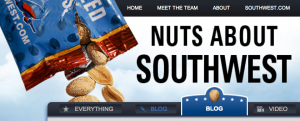I’ve received great feedback on my series of Social Media PR Disasters. This week, let's look at the lessons learned from last year's "Too Fat to Fly” incident involving one of BRANDEMiX fav brands: Southwest Airlines.
The Brand: Southwest Airlines
- Over 12 million monthly visits to its website
- Over 1.1 million Twitter followers
- 1.6 million Facebook likes
The Response: Just as Smith’s fans took up the cause, Southwest's fans made sure to alert the company via Twitter. Southwest responded with tweets like “Hey folks – trust me, I saw the tweets from @ThatKevinSmith I’ll get all the details and handle accordingly! Thanks for your concerns!”
The airline then misstepped by issuing a statement on its blog, which included the line, “Mr. Smith originally purchased two Southwest seats on a flight from Oakland to Burbank – as he’s been known to do when traveling on Southwest.” This is the filmmaker’s private travel information, which the airline released without his approval.
The Result: Linda Rutherford, Southwest’s Vice President of Communications, spoke to Smith on the phone and personally apologized. She posted an entry on the airline’s blog stating “I for one have learned a lot today. The communication among our employees was not as sharp as it should have been and it’s apparent that Southwest could have handled this situation differently. Thanks, Kevin, for your passion around this topic.” However, Rutherford also contradicted the earlier claim that the captain had singled out Smith as a safety risk, illustrating that communication among Southwest did indeed need improving. Between Smith’s rabid fan base and Southwest’s continued stumbling, CNET called the incident “about the worst scenario imaginable” for the airline.The airline then misstepped by issuing a statement on its blog, which included the line, “Mr. Smith originally purchased two Southwest seats on a flight from Oakland to Burbank – as he’s been known to do when traveling on Southwest.” This is the filmmaker’s private travel information, which the airline released without his approval.
The Takeaway: So what lessons can be learned form the incident that Kevin Smith called “Too Fat to Fly”?
- Be Prepared
Smith’s flight was on a Saturday, and he began tweeting about the problem as he waited for the next flight (on Southwest, in fact) and while he was in the air. Imagine almost 48 hours of uncontested bad press if no one at Southwest had been monitoring the company’s Twitter feed or Google Alerts until Monday. Luckily, a marketing rep was on social media duty and mounted an initial response very quickly.
- Train the PR Department in Customer Service – and Vice-Versa
Where does customer service end and public relations begin? Customer service, previously a private interaction between a company and an individual, now takes place in public, via Twitter and Facebook, and in real time. Southwest’s PR team needed to coordinate with the customer service department in order to evaluate the problem. If the two divisions are destined to become one, your company would benefit from cross-training.
- Admit When You’re Wrong
It soon became clear how much Southwest mishandled the situation. The airline claimed that the pilot made the decision to remove Smith, when in reality the pilot never saw him; it said that Smith’s seatmates complained, when they actually never spoke up; and it claimed that Smith violated its size policy, when he didn’t. Southwest thus had little choice but to apologize. “I told him we made a mistake in trying to board him as a standby passenger and then remove him. And I told him we were sorry,” Communications VP Rutherford wrote in her blog. For his part, Smith described Rutherford as “very sweet, warmly compassionate, and apologetic.” Sometimes the high road is the only road to take.
Read my recent article about what happened when Chevrolet gave a little too much power to its critics and faced a similar Social Media PR Disaster.
Read my recent article about what happened when Chevrolet gave a little too much power to its critics and faced a similar Social Media PR Disaster.



No comments:
Post a Comment
Note: Only a member of this blog may post a comment.